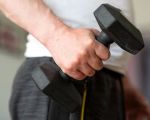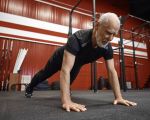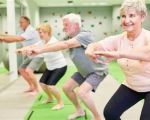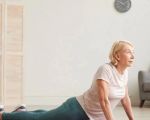- 1-Understanding-Posture-Challenges-at-Desk-Jobs
- 2-Key-Gym-Workouts-to-Improve-Posture
- 3-Real-Life-Success-Stories-of-Posture-Improvement
- 4-Professional-Tips-for-Sustaining-Good-Posture
1. Understanding Posture Challenges at Desk Jobs
Sitting for extended hours at a desk can lead to poor posture, resulting in back pain, neck stiffness, and reduced mobility. The sedentary nature of desk jobs often encourages slouching, forward head posture, and rounded shoulders, which can progressively worsen if left unaddressed.
Recognizing these common posture issues is the first step toward effective correction. Incorporating gym workouts for improving posture at desk job into your routine can counteract these effects by strengthening weak muscles and stretching tight areas.
1.1 The Impact of Poor Posture
Poor posture not only causes discomfort but may also affect breathing, digestion, and overall energy levels. Taking proactive measures through targeted exercise is essential for long-term health and productivity.
2. Key Gym Workouts to Improve Posture
Effective posture improvement focuses on strengthening the upper back, core, and shoulders while increasing flexibility. Here are essential workouts tailored to desk job workers:
2.1 Face Pulls
Face pulls target the rear deltoids and upper back muscles, helping correct rounded shoulders. Using a cable machine or resistance bands, pull the handles toward your face while keeping elbows high and squeezing shoulder blades together.
2.2 Planks
Planks build core stability, supporting proper spinal alignment. Start with holding a forearm plank for 20–30 seconds and gradually increase duration as strength improves.
2.3 Thoracic Extensions
Using a foam roller, thoracic extensions help mobilize the upper back, counteracting stiffness from prolonged sitting. Slowly arch over the roller, pausing at tight spots.
2.4 Rows
Seated or bent-over rows strengthen the mid-back muscles, essential for upright posture. Focus on pulling with your back rather than your arms.
2.5 Chest Stretches
Stretching tight chest muscles prevents forward rounding. Use doorway stretches or foam rolling to open up the chest.
3. Real-Life Success Stories of Posture Improvement
Consider the story of a marketing professional who experienced chronic neck pain after years at a desk. By integrating targeted gym workouts focused on posture correction, including face pulls and planks, within just three months, she reported significant relief and improved posture. Her enhanced confidence and energy levels positively influenced both her work and personal life.
Another example is a software developer who incorporated thoracic mobility exercises and rows into his routine after consulting fitness experts. This approach not only reduced his back stiffness but also improved his breathing and concentration during work hours.
3.1 The Power of Consistency
These stories highlight the importance of regular, mindful workouts combined with ergonomic adjustments for sustainable posture improvement.
4. Professional Tips for Sustaining Good Posture
In addition to workouts, maintaining proper posture at a desk requires awareness and ergonomic practices. Professionals recommend:
4.1 Ergonomic Workspace Setup
Adjust your chair, monitor, and keyboard to support a neutral spine and reduce strain.
4.2 Regular Movement Breaks
Stand, stretch, or walk briefly every 30–60 minutes to alleviate muscle tightness.
4.3 Mindful Posture Checks
Frequently remind yourself to sit tall with shoulders relaxed and chin slightly tucked.
For personalized workout plans and ergonomic advice tailored to improving posture for desk job workers, visit Fitness to discover expert resources and support designed to help you achieve lasting wellness.








